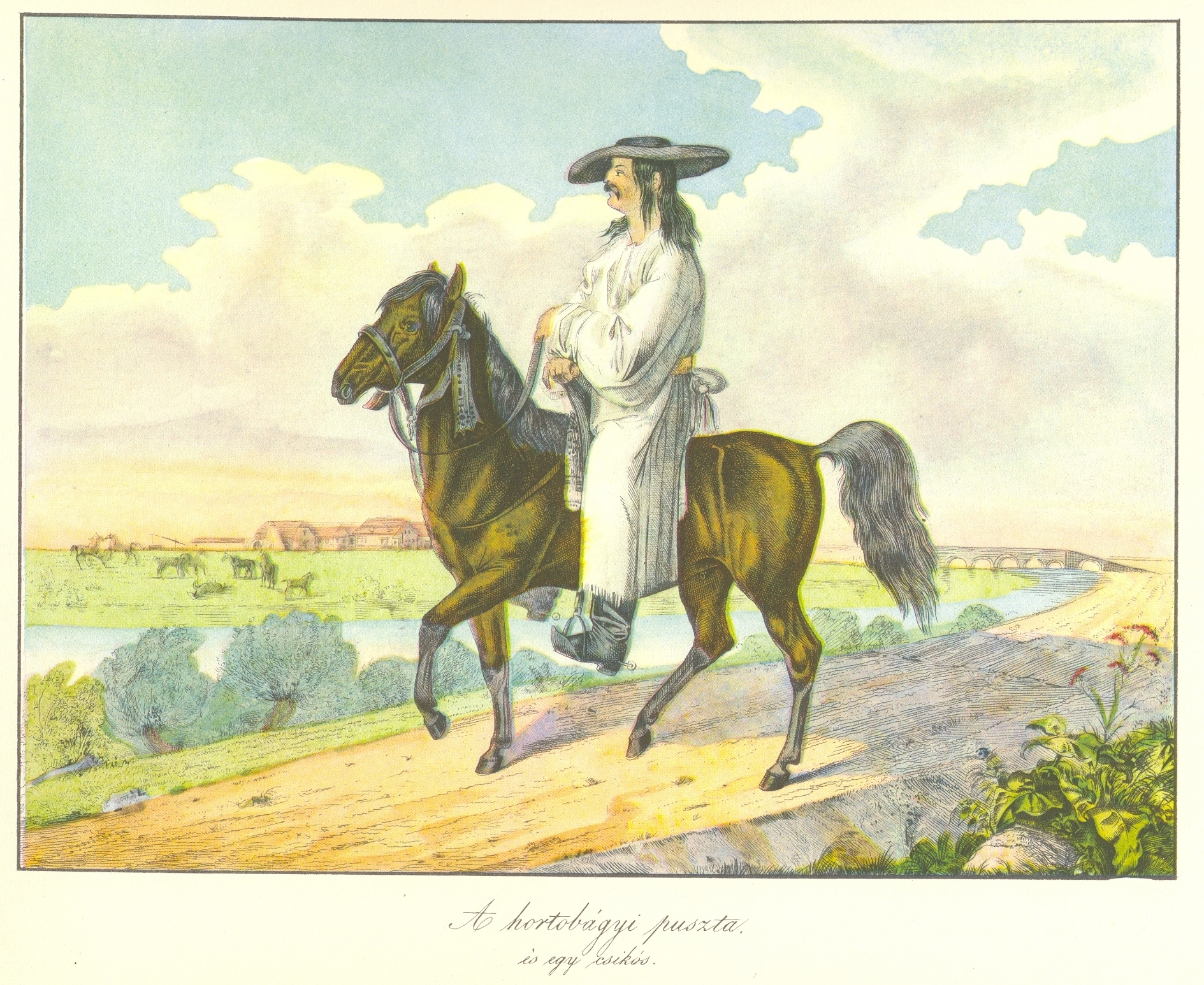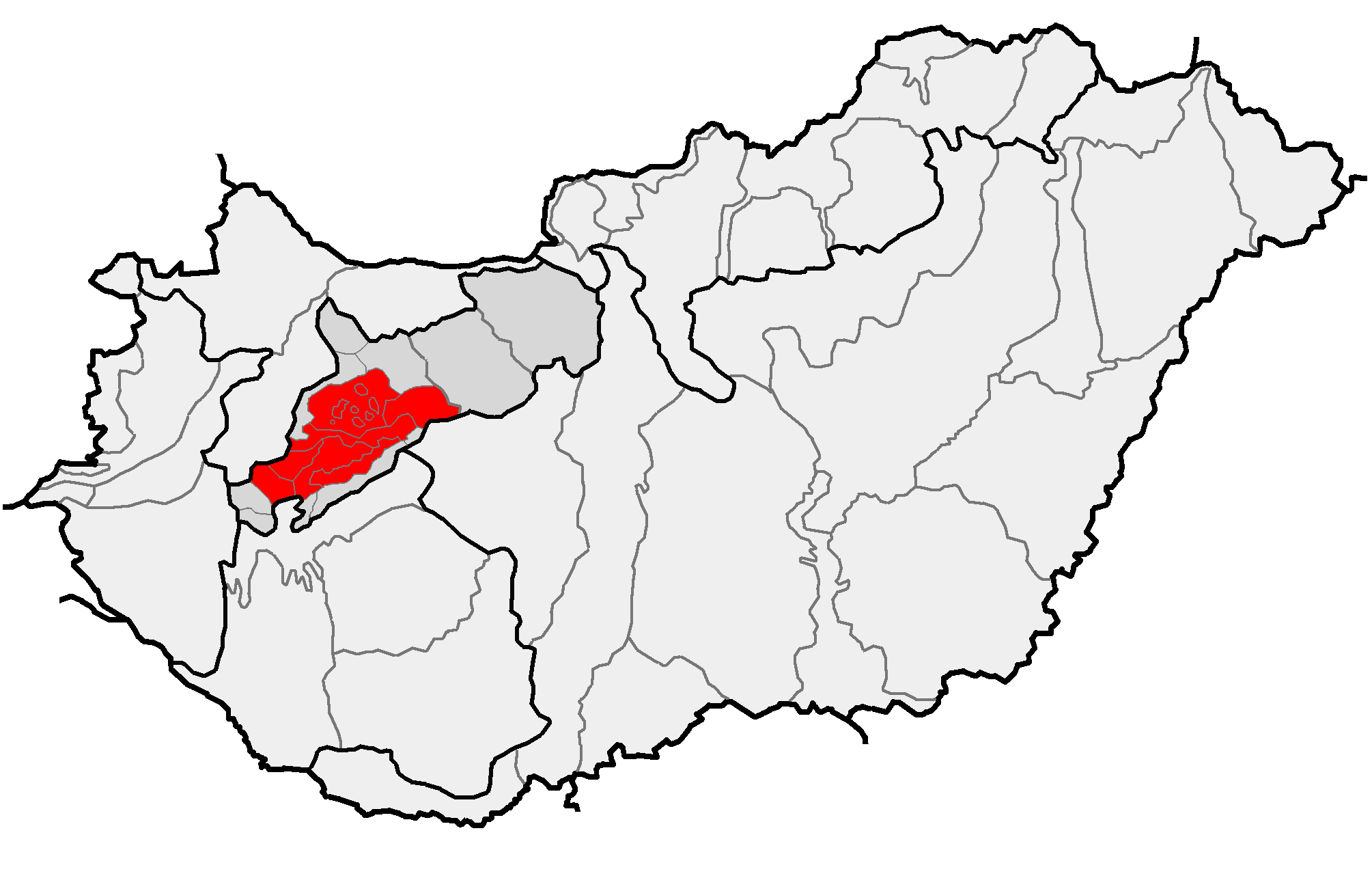|
Betyár
The betyárs ( Hungarian: ''betyár'' (singular) or ''betyárok'' (plural)), were the highwaymen of the 19th century Kingdom of Hungary. The "betyár" word is the Hungarian version of "Social Bandit".Shingo MinamizukaA social bandit in nineteenth century Hungary: Rózsa Sándor East European Monographs, 2008, p. 1 (The word itself is of Ottoman Turkish origin:''"bekar"'' means 'bachelor' or 'unmarried man' in Turkish.) Several betyárs have become legendary figures who in the public mind fought for social justice. The most famous Hungarian betyárs were Sándor Rózsa from the Great Hungarian Plain, Jóska Sobri, Jóska Savanyú from Bakony and Márton Vidróczky from Mátra. Lviv Batayr's culture ("батяр" (batiar)- ukrainian ) in the west part of Ukraine (Lviv, Ivano-Frankivsk, Zakarpatia, Ternopil oblast) was spread during the 19th and 20th centuries. Hungarian folktale tradition Until the 1830s they were mainly regarded as criminals, but an increasing public a ... [...More Info...] [...Related Items...] OR: [Wikipedia] [Google] [Baidu] |
Highwayman
A highwayman was a robber who stole from travellers. This type of thief usually travelled and robbed by horse as compared to a footpad who travelled and robbed on foot; mounted highwaymen were widely considered to be socially superior to footpads. Such criminals operated until the mid or late 19th century. Highwaywomen, such as Katherine Ferrers, were said to also exist, often dressing as men, especially in fiction. The first attestation of the word ''highwayman'' is from 1617. Euphemisms such as "knights of the road" and "gentlemen of the road" were sometimes used by people interested in romanticizing (with a Robin Hood–esque slant) what was often an especially violent form of stealing. In the 19th-century American West, highwaymen were sometimes known as ''road agents''. In Australia, they were known as bushrangers. Robbing The great age of highwaymen was the period from the Restoration in 1660 to the death of Queen Anne in 1714. Some of them are known to have been disban ... [...More Info...] [...Related Items...] OR: [Wikipedia] [Google] [Baidu] |
Sándor Rózsa
Sándor Rózsa (born July 10, 1813, Röszke – died November 22, 1878, Szamosújvár) was a Hungarian outlaw (in Hungarian: ''betyár'') from the Great Hungarian Plain. He is the best-known Hungarian highwayman; his life inspired numerous writers, notably Zsigmond Móricz and Gyula Krúdy. He enjoyed much the same esteem as English highwayman Dick Turpin, with elements of Robin Hood thrown in for good measure. Rózsa, like Jóska Sobri, is one of the most famous Hungarian betyárs (bandits). Biography It was at the age of 23 (1836) when he first was sent to jail in Szeged. After escaping he chose the life of a highwayman and a number of bloody and infamous acts made his name well-known. In October 1848 on behalf of the Committee of Defence (''Honvédelmi Bizottmány''), he joined the Hungarian Revolution of 1848 with his company of 150. With their strange appearance and method of fighting they had success but because of their lack of discipline they were disbanded. ... [...More Info...] [...Related Items...] OR: [Wikipedia] [Google] [Baidu] |
Jóska Sobri
Jóska Sobri or Jóska Zsubri (born József Pap;Magyar Filmtudományi Intézet és Filmarchivum, Magyar Filmintézet, Magyar Nemzeti FilmarchívumFilmévkönyv 2002, p. 54 1810 – 17 February 1837) was a Hungarian bandit. He became a legendary outlaw in Transdanubia, Kingdom of Hungary. Fifty years after his death, people still spoke of his passing and some thought he was still alive. Sobri, like Sándor Rózsa Sándor Rózsa (born July 10, 1813, Röszke – died November 22, 1878, Szamosújvár) was a Hungarian outlaw (in Hungarian: ''betyár'') from the Great Hungarian Plain. He is the best-known Hungarian highwayman; his life inspired numerous w ..., is one of the most famous Hungarian betyárs (bandits). References {{DEFAULTSORT:Sobri, Joska Hungarian outlaws 1810 births 1837 deaths 19th-century Hungarian people ... [...More Info...] [...Related Items...] OR: [Wikipedia] [Google] [Baidu] |
Kingdom Of Hungary
The Kingdom of Hungary was a monarchy in Central Europe that existed for nearly a millennium, from the Middle Ages into the 20th century. The Principality of Hungary emerged as a Christian kingdom upon the coronation of the first king Stephen I at Esztergom around the year 1000;Kristó Gyula – Barta János – Gergely Jenő: Magyarország története előidőktől 2000-ig (History of Hungary from the prehistory to 2000), Pannonica Kiadó, Budapest, 2002, , p. 687, pp. 37, pp. 113 ("Magyarország a 12. század második felére jelentős európai tényezővé, középhatalommá vált."/"By the 12th century Hungary became an important European factor, became a middle power.", "A Nyugat részévé vált Magyarország.../Hungary became part of the West"), pp. 616–644 his family (the Árpád dynasty) led the monarchy for 300 years. By the 12th century, the kingdom became a European middle power within the Western world. Due to the Ottoman occupation of the central and south ... [...More Info...] [...Related Items...] OR: [Wikipedia] [Google] [Baidu] |
Hajduk (soldiers)
The ''hajdúk'' (singular ''hajdú'') were irregular or mercenary soldiers of the Kingdom of Hungary in the 16th and 17th centuries. Etymology The Hungarian term ''hajdú'' (''hajdúk'' is the plural) may derive from ''hajtó'' which meant (cattle) drover. In 16th century Hungary, cattle driving was an important and dangerous occupation and drovers traveled armed. Some of them ended up as bandits or retainers in the service of local landowners and many may have become soldiers. In any case, the term hajduk came to be used in the 16th century to describe irregular soldiers. There is probably an etymological link between ''hajdú'' and the Turkish word ''hajdud'' which was used by the Ottomans to describe Hungarian infantry soldiers, though it is not clear whether the word traveled from Hungarian to Turkish or vice versa. History In 1604-1606, István Bocskay, Lord of Bihar, led an insurrection against the Habsburg Emperor, whose army had recently occupied Transylvania and b ... [...More Info...] [...Related Items...] OR: [Wikipedia] [Google] [Baidu] |
Gulyás (herdsman)
The gulyás is the traditional mounted cattle-herdsman of Hungary. The gulyás tradition is associated with the Hungarian puszta and with the Hungarian Grey or Hungarian Steppe breed of Podolic cattle, hu, Magyar szürke szarvasmarha, now considered a meat breed but formerly used as oxen. ''Gulyás'' is the origin of the word ''goulash Goulash ( hu, gulyás) is a soup or stew of meat and vegetables seasoned with paprika and other spices. Originating in Hungary, goulash is a common meal predominantly eaten in Central Europe but also in other parts of Europe. It is one of the n ...''. See also * Csikós * Betyárs * Hajduk (soldiers) References Hungarian culture Pastoralists Animal husbandry occupations Horse history and evolution Horse-related professions and professionals {{horse-stub ... [...More Info...] [...Related Items...] OR: [Wikipedia] [Google] [Baidu] |
Csikós
The csikós is the mounted horse-herdsman of Hungary. The csikós tradition is closely associated with the Hungarian ''puszta'', in recent times particularly in the environs of Debrecen and Hortobágy National Park. It is also closely linked to the Nonius breed of horse, for which one of the two principal breeding centres is the Máta Stud, some 3 kilometres from Hortobágy Hortobágy is a village in Hajdú-Bihar County in eastern Hungary. It lies on the banks of the river, which is crossed at Hortobágy by the Nine-arched Bridge, one of the principal man-made monuments of the Hortobágy National Park. The park c .... Images Hungary, Hortobágy Fortepan 83757.jpg, Csikós on a white horse, 1935 Hungary, Hortobágy Fortepan 83753.jpg, Csikós on bay horses, 1935 Hungria - Bugac - panoramio.jpg, Hungarian post Puszta-Five.jpg, Hungarian post See also * Betyárs * Hajduk (soldiers) References {{DEFAULTSORT:Csikos Animal husbandry occupations Horse-related p ... [...More Info...] [...Related Items...] OR: [Wikipedia] [Google] [Baidu] |
Márton Vidróczki
Marton may refer to: Places England * Marton, Blackpool, district of Blackpool, Lancashire * Marton, Bridlington, area of Bridlington in the East Riding of Yorkshire * Marton, Cheshire, village and civil parish in Cheshire * Marton, Cumbria, village in Cumbria * Marton, East Riding of Yorkshire, hamlet in the East Riding of Yorkshire * Marton, Harrogate, village in North Yorkshire * Marton, Lincolnshire, village in Lincolnshire * Marton, Middlesbrough, suburb of Middlesbrough * Marton, Myddle, Broughton and Harmer Hill, a location in Shropshire * Marton, Ryedale, village in North Yorkshire * Marton, Shropshire or Marton-in-Chirbury, village in Shropshire * Marton, Warwickshire, village in Warwickshire * Marton-in-the-Forest, North Yorkshire * Marton-le-Moor, village in North Yorkshire * Long Marton, parish of Eden, Cumbria * Whitegate and Marton, parish of Vale Royal, Cheshire Elsewhere * Marton, New Zealand, town in the Manawatu-Wanganui region * Marton, Queensland, town in t ... [...More Info...] [...Related Items...] OR: [Wikipedia] [Google] [Baidu] |
Juraj Jánošík
Juraj Jánošík (first name also ''Juro'' or ''Jurko'', ; baptised 25 January 1688, died 17 March 1713) was a Slovak highwayman. Jánošík has been the main character of many Slovak novels, poems, and films. According to the legend, he robbed nobles and gave the loot to the poor, a deed often attributed to the famous Robin Hood. The legend is known in neighboring Poland (under the name ''Jerzy Janoszik'' also ''Janosik'', ''Janiczek'' or ''Janicek'') and the Czech Republic. The actual robber had little to do with the modern legend, whose content partly reflects the ubiquitous folk myths of a hero taking from the rich and giving to the poor. However, the legend was also shaped in important ways by the activists and writers in the 19th century when Jánošík became the key highwayman character in stories that spread in the north counties of the Kingdom of Hungary (much in present Slovakia) and among the local Gorals inhabitants of the Podhale region north of the Tatras. The imag ... [...More Info...] [...Related Items...] OR: [Wikipedia] [Google] [Baidu] |
Rózsa Sándor Vérdíj
Rózsa is a Hungarian language surname or female given name, which is equivalent to the English name Rose. The surname Rózsa is derived from the given name.''Dictionary of American Family Names''"Rózsa Family History" Oxford University Press, 2013. Retrieved on 16 January 2016. Variants of the name include Rozsa, Rózsák, Rózsás, and Rozsas. The name may refer to: Given name * Rózsa Csillag (1832–1892), Austro-Hungarian opera singer *Rózsa Darázs (born 1987), Hungarian speed-skater * Rózsa Hoffmann (born 1948), Hungarian politician * Rózsa Péter (1905–1977), Hungarian mathematician Surname * Dániel Rózsa (born 1984), Hungarian football player * Eduardo Rózsa-Flores (1960–2009), Hungarian journalist * Endre Rózsa (1941–1995), Hungarian poet *János Rózsás (born 1937), Hungarian film director *Johnny Rozsa (born 1946), American photographer * Miklós Rózsa (1907–1995), Hungarian composer *Norbert Rózsa (born 1972), Hungarian swimmer *Sándor Rózsa (181 ... [...More Info...] [...Related Items...] OR: [Wikipedia] [Google] [Baidu] |
Bakony
Bakony () is a mountainous region in Transdanubia, Hungary. It forms the largest part of the Transdanubian Mountains. It is located north of Lake Balaton and lies almost entirely in Veszprém county. The Bakony is divided into the Northern and Southern Bakony through the Várpalota-Veszprém-Ajka-Devecser line. (706 m) high Kőris-hegy in the Northern Bakony is the highest peak of the range. Other high mountains are Som-hegy (649 m), Középső-Hajag (646 m), Öreg-Futóné (576 m) in the Northern Bakony, and Kab-hegy (599 m), Üsti-hegy (536 m) and Agár-tető (511 m) in Southern Bakony. Zirc is often called the ''Capital of the Bakony'' because it is located in the center of the Northern Bakony. The Bakony Museum Zirc (german: Sirtz) is a town in Veszprém county, Hungary. It is the administrative seat of Zirc District. At the end of the 19th century and the beginning of the 20th century, Jews lived in Zirc. In 1910, 92 Jews lived in Zirc, Some of them ... is loca ... [...More Info...] [...Related Items...] OR: [Wikipedia] [Google] [Baidu] |




